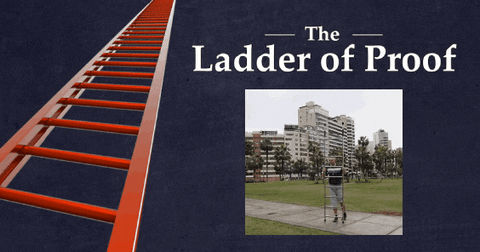The Truth About Speed Ladders
In the world of sports performance, the world of speed and performance there is this massive love for speed ladders. People claim they are the greatest thing in the world. Parents will comment to me day in and day out about how their child should be doing speed ladder work as if they know more than I do (maybe they do?).

I have had a disdain towards speed ladders because of speed coaches I have viewed as charlatans. And by charlatans, I mean coaches that never really know how to get an athlete stronger, more athletic, or faster. Instead, the charlatans just get some freak athletes who come in, the coaches blow a whistle and tell the athletes to get on a speed ladder to drill.

Typically the charlatan coaches use them by saying the speed ladder helps with overall speed. The charlatans will say it will help with performance in a 10, 40, or 60-yard dash. Athletes might be asked to do single-leg hops, shuffles, and other footwork drills. These exercises have a role in training. To a point.
But when we talk about increasing speed or building speed, we have to refer back to what is speed. The 100-meter sprint has a ton of science behind it. There is the start position, drive phase (max acceleration), transition speed, and then maximal mechanics at max speed/velocity. Those are the three phases of sprinting, of speed.

One of the downfalls of speed ladders is that charlatan coaches will tell athletes that it will improve footwork. They’ll say that will make athletes run faster, but forget to teach how to have a starting position, how to accelerate and drive, use the hamstrings, quads, and glutes all together, and they certainly don’t teach athletes how to hold top-end speed.
In the past, I have hated on speed ladders mainly as a childish, immature, cry baby who was jealous of other coaches. In the past few years, I’ve grown up a little bit and started to have a more open mind towards using speed ladders to develop speed.
I’m going to share the best methods to use the speed ladder to transfer into the realm of sports performance.
Warm-Up
The speed ladder is great to warm up. The speed ladder helps with impulse control and motor control. It is a great tool to put in six to eight exercises while barefoot to increase proprioception and increase neural drive going into a weightlifting session or max strength training session to get the body firing on all cylinders.

A Means Of Contrast Training
If you are a frequent reader of these blogs, you know who Nick Singleton is. One day, training Nick over zoom during covid, I had Nick doing heavy cleans. After every set, Nick would go off-camera and I hear, “Bum-ba-pa-bum, bum-ba-pa-bum” going on in the background. This occurred a few times before I asked Nick, “What are you doing?” Nick casually replied, “I’m doing the speed ladder because when I’m resting I’m trying to work on my footwork and foot speed.”
This made me think. Nick was doing some impulse control and twitch force work. From the heightened state of the big cleans, his body is super aware, and then following it up with the footwork drills is a means of contrast training.

Strength and conditioning can use this form of contrast training by having athletes rest two to three minutes after a big back squat, front squat, single-leg squat, or clean and then go do footwork drills on the speed ladder to implement contrast training through agility work targeted athlete-specific needed skills.
Agility Acquisition
Having an athlete who is a little uncoordinated, someone who has two left feet, or is stiff when moving, the speed ladder can be used to help improve motor control to get the athlete to enhance their kinesthetic vocabulary. The speed ladder is also very, very good for cutting.
The speed ladder can teach the body how to be more precise with footwork, create moments for isometric control to drive back through laterally, and we can also think about athletes who need to see and feel what they’re doing, the co-contraction skill can occur just on feel.
Recap
The speed ladder can be used for multiple different means of agility, force development, and improving overall motor control.
Just be aware of the charlatans. The speed ladder will increase agility. The speed ladder will not increase an athlete’s speed, particularly in the 40-yard dash. The speed ladder does not focus on the start, the drive phase, or having a longer stride at top-end speed. Be warned, for athletes who are not trained on their actual sprint mechanics, the speed ladder can shorten athletes’ stride length at top-end speed.
DANE MILLER
Dane Miller is the owner and founder of Garage Strength Sports Performance. He works with a select handful of clients on building comprehensive programs for fitness and nutrition. Several times a year he leads a workshop for coaches, trainers, and fitness enthusiasts.


